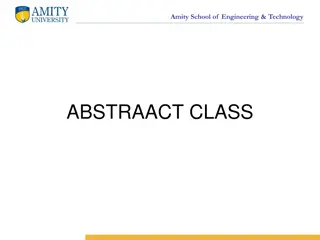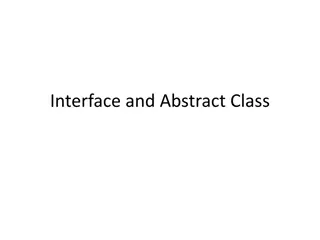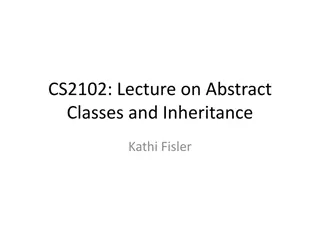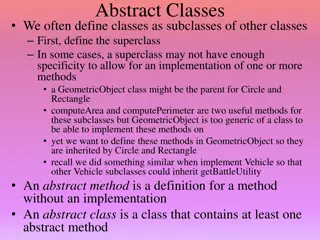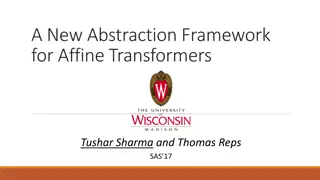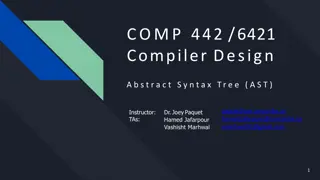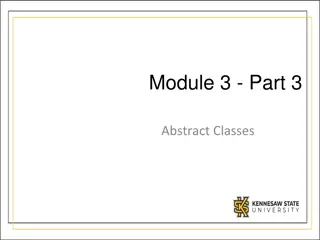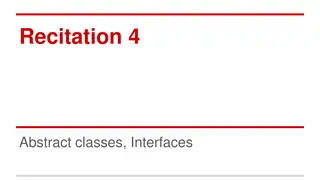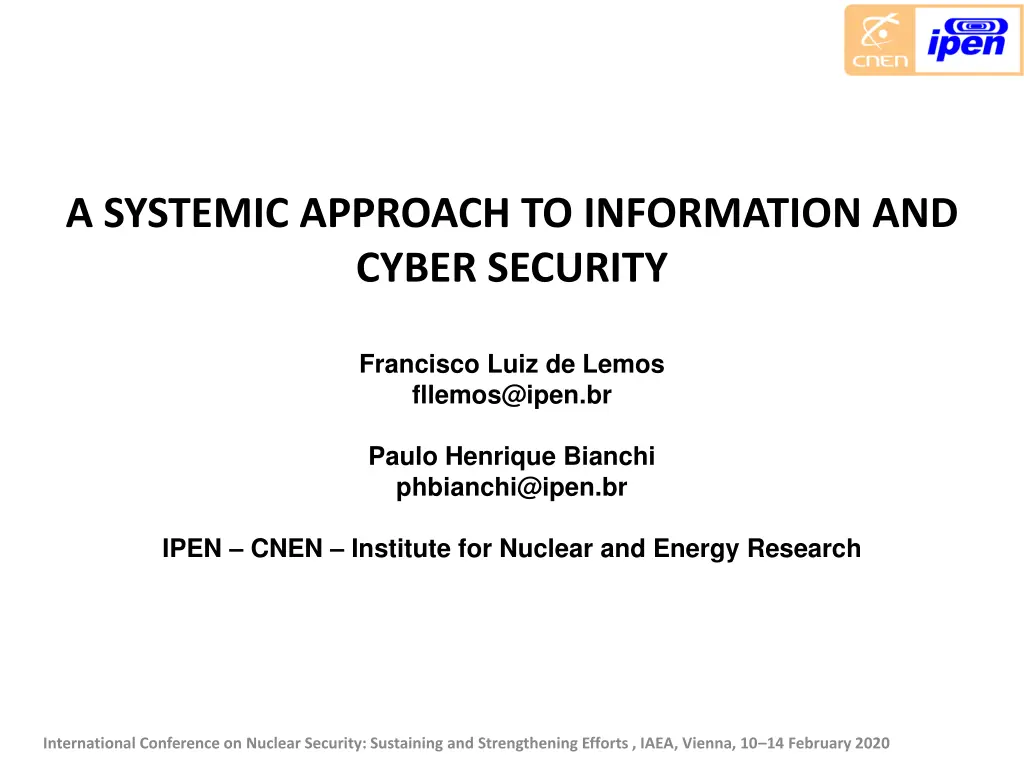
Systemic Approach to Information and Cyber Security at International Nuclear Conference
Explore the systemic approach to information and cyber security presented by Francisco Luiz de Lemos and Paulo Henrique Bianchi at the International Conference on Nuclear Security. Understand the application of STAMP and STPA methodologies in analyzing interactions, controls, and potential hazards within complex systems like cyber protection systems. Gain insights into integrating cyber protection systems with operational systems for enhanced safety and security.
Download Presentation

Please find below an Image/Link to download the presentation.
The content on the website is provided AS IS for your information and personal use only. It may not be sold, licensed, or shared on other websites without obtaining consent from the author. If you encounter any issues during the download, it is possible that the publisher has removed the file from their server.
You are allowed to download the files provided on this website for personal or commercial use, subject to the condition that they are used lawfully. All files are the property of their respective owners.
The content on the website is provided AS IS for your information and personal use only. It may not be sold, licensed, or shared on other websites without obtaining consent from the author.
E N D
Presentation Transcript
A SYSTEMIC APPROACH TO INFORMATION AND CYBER SECURITY Francisco Luiz de Lemos fllemos@ipen.br Paulo Henrique Bianchi phbianchi@ipen.br IPEN CNEN Institute for Nuclear and Energy Research International Conference on Nuclear Security: Sustaining and Strengthening Efforts , IAEA, Vienna, 10 14 February 2020
Outline 1. INTRODUCTION 2. STAMP_ SYSTEMS THEORETIC ACCIDENT MODEL AND PROCESSES 3. STPA _ SYSTEMS THEORETIC PROCESSES ANALYSIS 4. THE HIERARCHIAL CONTROL STRUCTURE 5. ORGANIZATIONAL CULTURE Safety and Security harmonization 6. DEVELOPING SCENARIOS 7. APPLYING STPA 8. CONCLUSION International Conference on Nuclear Security: Sustaining and Strengthening Efforts , IAEA, Vienna, 10 14 February 2020
Introduction The growing and intensive use of computerized systems in all aspects of the industry lifecycle has been imposing new challenges as for the best approach to computer and information security. It has been suggested that the physical protection systems principles could be applied to cyber protection systems. However, due to the nature of the cyber space, this is not a straight forward task. The nature of cyber space lends itself to a systemic approach. Need to integrate the cyber protection system and all other systems necessary for the operation of an installation. Management and support systems related to safety, administrative measures, policies, regulations, and every other aspects of the installation operation. International Conference on Nuclear Security: Sustaining and Strengthening Efforts , IAEA, Vienna, 10 14 February 2020
STAMP_ SYSTEMS THEORETIC ACCIDENT MODEL AND PROCESSES STAMP is an accident causality mode based on systems theory and systems thinking. According to systems theory, accidents are a problem of control of the interactions between the components of the system, rather than exclusively failures of components. STAMP is a methodology for analysis of the interactions between the components of the system. One important characteristics of the systemic approach is that it does not consider only failures, including human errors, as causes for accidents. Rather it assumes that accidents are a result of unwanted consequences due to unintended interactions between the components. In other words, accidents can happen even if all components are doing exactly what they are supposed to do. International Conference on Nuclear Security: Sustaining and Strengthening Efforts , IAEA, Vienna, 10 14 February 2020
STPA _ SYSTEMS THEORETIC PROCESSES ANALYSIS STPA is a hazard analysis technique based on STAMP. It helps on the identification of possible problems on the controls of the interactions between the components of the system by tracking how the inadequate control could lead the system to hazardous states. It also helps on the identification of how the previously inadequate controls could occur. Due to its nature, STPA can offer many opportunities for the study of the many aspects of cyber protection systems integration with the installation operation systems. International Conference on Nuclear Security: Sustaining and Strengthening Efforts , IAEA, Vienna, 10 14 February 2020
STPA _ SYSTEMS THEORETIC PROCESSES ANALYSIS The first stage for the study of the interactions is to build a functional hierarchical control structure. This control structure is a feedback control of the flux of information within the system. One very interesting aspect of STPA technique is that it is possible to analyze how the functional hierarchical control structure could deteriorate with time. For example, it can show how organizational culture, and its subsets security and safety cultures, are can affect the decisions, or control actions, perception of feedbacks, etc. Another natural application of STPA is on the study of the harmonization between safety and security requirements. International Conference on Nuclear Security: Sustaining and Strengthening Efforts , IAEA, Vienna, 10 14 February 2020
THE HIERARCHIAL CONTROL STRUCTURE Is the representation of the system in terms of feedback control that should be enough to enforce the correct interactions between the components. Each box represents a major player in the system. Every component has to be assigned a responsibility as for its function in the system. The decisions, or control actions, are based on the knowledge the controller has about the state of the system. This information is provided by the feedback. Therefore, in case of conflicts between the actual state of the system and the information provided, for example, the decisions can potentially lead to hazardous states. It can be understood then why organizational culture, and its subsets security and safety cultures, are major factors to help keep the control structure working properly. International Conference on Nuclear Security: Sustaining and Strengthening Efforts , IAEA, Vienna, 10 14 February 2020
Functional control Structure for a Nuclear Installation Nuclear Installation Lawmakers Regulators / Other Government agencies Global Market Nuclear Industry Unions - Associations Research communities Contractors Controllers Operators Cell phones Personal Computers Social Networks / Media Vendors (several different cultures) Maintenance upgrades Diverse manufacturers Cyber Protection System Automated controllers I/C systems Networks Vendors (several different manufacturers and cultures) Maintenance - upgrades Controlled process Digital equipment Internet access Legend Decision Feedback International Conference on Nuclear Security: Sustaining and Strengthening Efforts , IAEA, Vienna, 10 14 February 2020
ORGANIZATIONAL CULTURE Organizational culture permeates all the instances of the system. Figure 1 depicts an example of a system in which the nuclear installation is one of the components. The system comprises regulators, the nuclear industry, associations, unions, vendors, market. This is not an exhaustive list of components. It is important to note that equipment and software are designed by humans and, therefore, are affected by their cultures, in this case especially safety and security cultures. This is especially important in renovations or upgrades where equipment from different companies are bought and introduced in an old system. Harmonization between safety and security International Conference on Nuclear Security: Sustaining and Strengthening Efforts , IAEA, Vienna, 10 14 February 2020
DEVELOPING SCENARIOS With the help of the hierarchical control structure it is possible to create scenarios for possible vulnerabilities in the system. In this case we would not consider any protection barriers or levels of security, since the whole system is being considered equally. Every decision and feedback can have a direct or indirect effect in the perception of the state of the system by any of the controllers. In this sense it is important to emphasize that we live in a world extremely connected, including social media, internet of things, etc. Every of the boxes, controllers, can also have different cultures. This will certainly have impacts on perceptions of different natures. In the Figure 1 we can see many other possibilities for interactions such as regulation, equipment with internet access, contractors and vendors. International Conference on Nuclear Security: Sustaining and Strengthening Efforts , IAEA, Vienna, 10 14 February 2020
APPLYING STPA Accident is an unacceptable loss defined according to the stake holders More than one accident can be considered. For example: damage to reputation; monetary loss; death or injury to individuals from public or workers; environmental contamination. In systemic approach we can consider not only accidents related to radiological consequences, but also loss of reputation and monetary, for example. A hazardous state is a systems state that can lead to an accident, or loss, given a worst case scenario related to the external conditions. The above listed accidents can result from release of radioactive material from an installation. In this case the release of radioactive material is the hazardous state of the system. External conditions are the worst condition that together with the hazardous state leads to the loss. Note that we can have control over the system s hazardous state only, while the external conditions are outside the system control. International Conference on Nuclear Security: Sustaining and Strengthening Efforts , IAEA, Vienna, 10 14 February 2020
CONCLUSION Cyber security is a very complex issue that requires a good understanding of all its interfaces and interactions with the many facets of the installation lifecycle. In a constant developing and connected world, the study of cyber and information security lends itself to a systemic approach, where instead of look for root causes, it would be more reasonable to look for possible interactions between the components of a system that could lead to vulnerabilities that would be exploited by malevolent people. In this context, it is not the objective of the systemic approach to identify failures only, but rather develop scenarios, where even though all components work the way they should, the system can migrate to situations of vulnerability in regard with security and safety. International Conference on Nuclear Security: Sustaining and Strengthening Efforts , IAEA, Vienna, 10 14 February 2020



